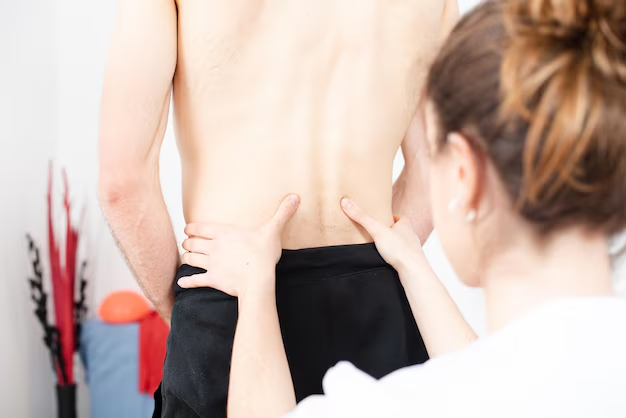Understanding Scoliosis: Causes and Insights for a Healthy Spine
Imagine standing in front of a mirror and noticing that one shoulder is slightly higher than the other, or perhaps while shopping for clothes, realizing shirts fit unevenly. These might be subtle indicators of a condition known as scoliosis. While scoliosis is often misunderstood, gaining a comprehensive understanding of its causes and implications can empower you to make informed choices about spinal health.
What Is Scoliosis?
Scoliosis is a medical condition where the spine curves sideways. This curvature often appears in an "S" or "C" shape, and can occur in different segments of the spine, such as the thoracic (mid-back) or lumbar (lower back) regions. Scoliosis can develop at any age but is most commonly diagnosed during adolescence.
H2: Types of Scoliosis
Scoliosis is not a one-size-fits-all condition; it is categorized based on its cause and age of onset:
Idiopathic Scoliosis: The most common type, accounting for about 80% of cases. Its exact cause is unknown, hence the term idiopathic.
Congenital Scoliosis: Occurs when the spine's bones form abnormally in the womb, leading to spinal curvature.
Neuromuscular Scoliosis: Develops due to neurological or muscular conditions, such as cerebral palsy or muscular dystrophy that result in loss of muscle control.
Degenerative Scoliosis: Typically occurs in adults as spinal discs and joints wear down with age.
H3: Signs and Symptoms of Scoliosis
While some signs of scoliosis are visible, others may manifest as physical discomfort or limitations:
- Uneven shoulders or waist: A common visual indicator.
- Rib prominence: One side of the rib cage may stick out more prominently than the other.
- Back pain: Particularly in adults with degenerative scoliosis.
- Restricted movement: Difficulty bending or twisting at the waist.
How Do You Get Scoliosis?
The origins of scoliosis are multi-faceted. Understanding these causes helps shed light on prevention and management strategies.
H2: Genetic Factors
Research suggests a genetic link in idiopathic scoliosis. If a close family member has the condition, there might be a higher risk. This genetic predisposition, however, does not guarantee scoliosis development; it indicates a potential for increased susceptibility.
H2: Developmental Influences
Bone Growth and Development: Scoliosis often appears during growth spurts in adolescence. Uneven growth of the vertebral body can lead to spinal curvature. Monitoring growth patterns during regular health check-ups can be beneficial.
H2: Neuromuscular Conditions
Certain neuromuscular conditions disrupt nerve signals to the muscles that support the spine. This disruption can lead to scoliosis as muscles fail to maintain spinal alignment.
H2: Environmental and Lifestyle Factors
While scoliosis cannot be directly linked to specific lifestyle choices, maintaining a healthy lifestyle with regular exercise and a balanced diet supports overall spine health, potentially reducing risks associated with degenerative scoliosis.
Addressing the Myths About Scoliosis
There are several misconceptions surrounding scoliosis. Dispelling these myths can lead to better understanding and management of the condition.
H3: Myth 1: Heavy Backpacks Cause Scoliosis
While carrying a heavy backpack can lead to back pain and poor posture, there is no scientific evidence linking it directly to the development of scoliosis.
H3: Myth 2: Scoliosis Is Caused by Poor Posture
Poor posture does not cause scoliosis. However, it can exacerbate symptoms and make the curvature more apparent.
H3: Myth 3: Scoliosis Always Causes Pain
Not everyone with scoliosis experiences pain. Symptoms vary widely and can range from mild to severe, depending on the curvature's degree and the individual's overall health.
Treatment and Management of Scoliosis
When it comes to managing scoliosis, early detection is key. Recognizing and monitoring changes in the spine can inform the best course of action.
H2: Diagnosis: Assessing Scoliosis
Diagnoses typically start with a physical examination and may be confirmed with imaging tests such as X-rays or MRIs. Screening programs in schools often help catch scoliosis early in adolescents.
H2: Non-Surgical Interventions
For mild to moderate cases, observation and bracing are common strategies.
- Observation entails regular check-ups to monitor the curvature's progression.
- Bracing aims to prevent further curvature in growing children and adolescents.
H2: Surgical Options
In more severe cases, where the curvature may impact daily activities or respiratory functions, surgery might be considered. Surgical options generally involve spinal fusion, where vertebrae are fused to correct alignment.
H2: Lifestyle and Home Remedies
While these methods do not cure scoliosis, they can alleviate symptoms and improve quality of life:
- Regular Exercise: Activities like swimming and yoga can enhance flexibility and strength.
- Physical Therapy: Targeted exercises can improve posture and alleviate discomfort.
- Mindfulness Practices: Techniques such as meditation can help manage pain perception.
Living with Scoliosis: Embracing a Full Life
Acceptance and adaptation are central to living well with scoliosis. Building a supportive network, engaging in activities that bring joy, and maintaining open communication with healthcare providers can enhance overall well-being.
H3: Mental and Emotional Well-being
Scoliosis can impact mental health, especially in teenagers coping with body image issues. Encouraging open dialogue about these feelings is essential for fostering a positive self-image.
H3: Support and Resources
Joining support groups can provide a sense of community and connection with others facing similar challenges. Educational materials and workshops further empower individuals with scoliosis and their families.
Key Takeaways for Navigating Scoliosis
Scoliosis, while complex, does not define anyone's identity or capability. Focus on maintaining spinal health and understanding scoliosis's nature leads to better management and quality of life.
Important Points to Remember:
- 👪 Genetic Factor: Family history can influence risk.
- 👦 Watch for Symptoms: Especially during growth spurts in youth.
- 🤔Myth Busting: Schools of thought that backaches directly cause scoliosis.
- 💪 Lifestyle Choices: Though not direct causes, maintaining a strong, flexible body is beneficial.
- 🏥 Seek Professional Guidance: Early detection through routine check-ups is crucial.
Understanding scoliosis paves the way to informed decisions about health and wellbeing. While this condition presents challenges, with knowledge and proactive management, individuals can lead fulfilling and active lives.
